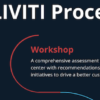CCaaS Sales Challenges:
What to Do About a Stalled Deal
Selling CCaaS solutions is complex. It’s not just about the new technology – with a CCaaS transformation, vendors are selling new solutions, new processes, and new ways of thinking about their customers.
Sometimes during a long sales cycle, a deal gets stalled, loses momentum, and feels like it’s going nowhere. Why does this happen, and what can you do about it?
Why are deals stalled? What is missing?
1. Urgency
Any buying decision that can be delayed, probably will be delayed. Most people are risk-averse in their decision-making, and if they don’t see an urgent need to spend a large amount of limited resources on a project, they are likely to push it off to a later date.
The need to delay can be described in a variety of ways – maybe a buyer says they are waiting out an uncertain economic cycle, or passing the decision on to a supervisor – but it boils down to one thing: stalled deals.
It can be particularly difficult to maintain a sense of urgency throughout the extended CCaaS sales lifecycle. The average B2B sales cycle is at least four months – but nearly half (46.4%) take 7 months or more!!1 And as CCaaS is a highly-complex sale, it often extends to the longer side of the sales cycle.
Educating multiple buyers while keeping the long-term value of the CCaaS investment front of mind for that amount of time is difficult. At some point, it becomes unprofitable to continue, rather than put the equivalent resources into an easier sale.
A clear point in defining the opportunity cost for buyers is being very clear about the expected return on investment (ROI) for the project. The more data you can present in support of this, the better. Often, this involves an in-depth analysis of the total cost of ownership (TCO) of the current state, and projected TCO if the company does not implement a CCaaS solution. This can be compared to projected cost savings (and other improvements) over the next year, five years, and beyond.
To build a sense of urgency around the buying decision, consider framing the anticipated results of the CCaaS transformation to the larger, long-term goals of the company. Is the business growing quickly? Emphasize the need for scalable solutions. Are they cutting costs? Talk with them about cost of labor, process efficiency, automation – and the opportunity cost of delay.
2. Ownership
Again, risk-averse buyers are the reason for a stalled deal. In many organizations, particularly those that have grown quickly through mergers and acquisitions, there is an unclear structure of responsibilities. CCaaS requires agreement across several different functional areas of the organization: the contact center, of course, but also IT, operations, finance, human resources, the C-Suite, etc.
If the final decision can be passed on to a different person, many buyers will do that rather than take on the risk of championing an expensive project themselves.
To overcome a lack of ownership at the target company, you must find an internal champion for the project. Ideally, this person will have the relationships and influence needed to help push past any roadblocks. To make your champion more effective, make sure you provide them with all of the information and materials needed to build a winning business case and get resources and buy-in across the organization.
Additionally, there is much to be said for the positive career impact of a person’s owning a successful transformation. The champion of a CCaaS transformation that works – comes in on time, within budget, with minimal disruption to services – can receive a boost to their perceived authority and success. Use the projected TVR (time to value received) to show a potential champion the positive effect a transformation can have on the company, and make them want to own it.
3. Alignment
So let’s say you have a lead that understands the urgency of modernizing their CCaaS solution, and a champion that is owning the project within the organization – but the deal is still stalled. What’s happening there?
Sometimes, a B2B sale is stalled due to a lack of alignment between the people making the buying decision at the purchasing organization. B2B buying decisions are generally made by committee, rather than by an individual.
Gartner research shows that the average B2B group buying decision involves 6-10 individuals. It’s difficult to get 6-10 people to agree on a restaurant for dinner – how can you get them to agree on an expensive purchase that can impact their career?
A group buying decision means that all parties have to be aligned – which means that each individual within the group feels that there will be an ROI that matters to them. The operations buyer probably needs to hear about process efficiency; the finance representative should hear about ROI; and the contact center manager will likely want to hear about expected impact on the customer experience.
A stalled deal can be incredibly frustrating for a salesperson. When you’ve invested time and effort into a sale that loses momentum, how do you know whether to keep trying or channel those resources to a different, possibly easier sale?
Providing B2B buyers with the information they need to maintain urgency, ownership, and alignment throughout the extended sales cycle is one way to move a sale forward. Another approach is to call in support from a third-party provider like ACLIVITI.
At ACLIVITI, we have built a team of experts that help CCaaS sales people achieve real, measurable results and move stalled deals forward. Let us manage the difficult clients. ACLIVITI can join your team at any stage: deal, strategy, assessment, or beyond. Our proven methodology helps ensure successful implementation of CCaaS solutions, seeing even the most complex projects through to completion. Want to learn more? Give us a call! We’d love to talk with you.











